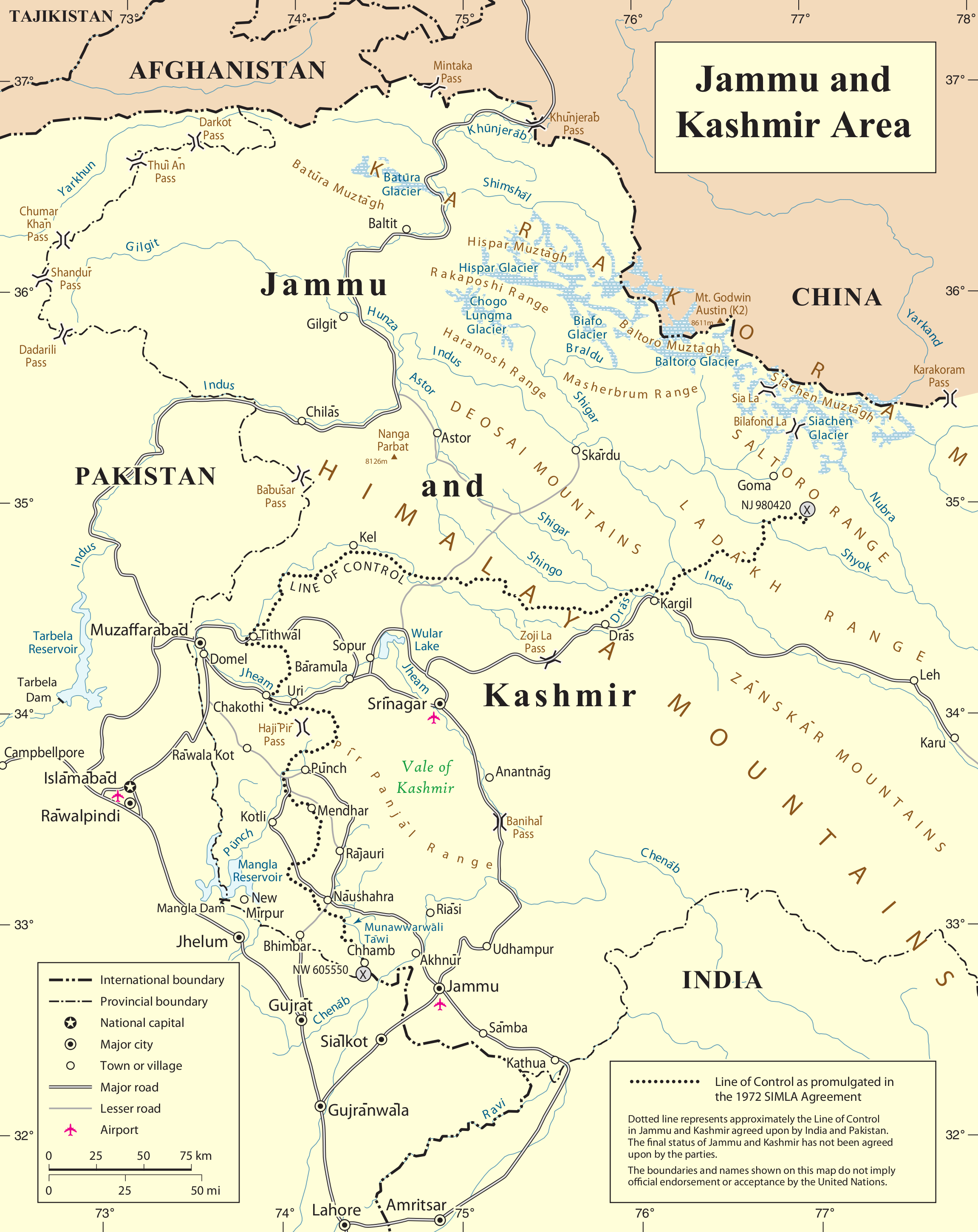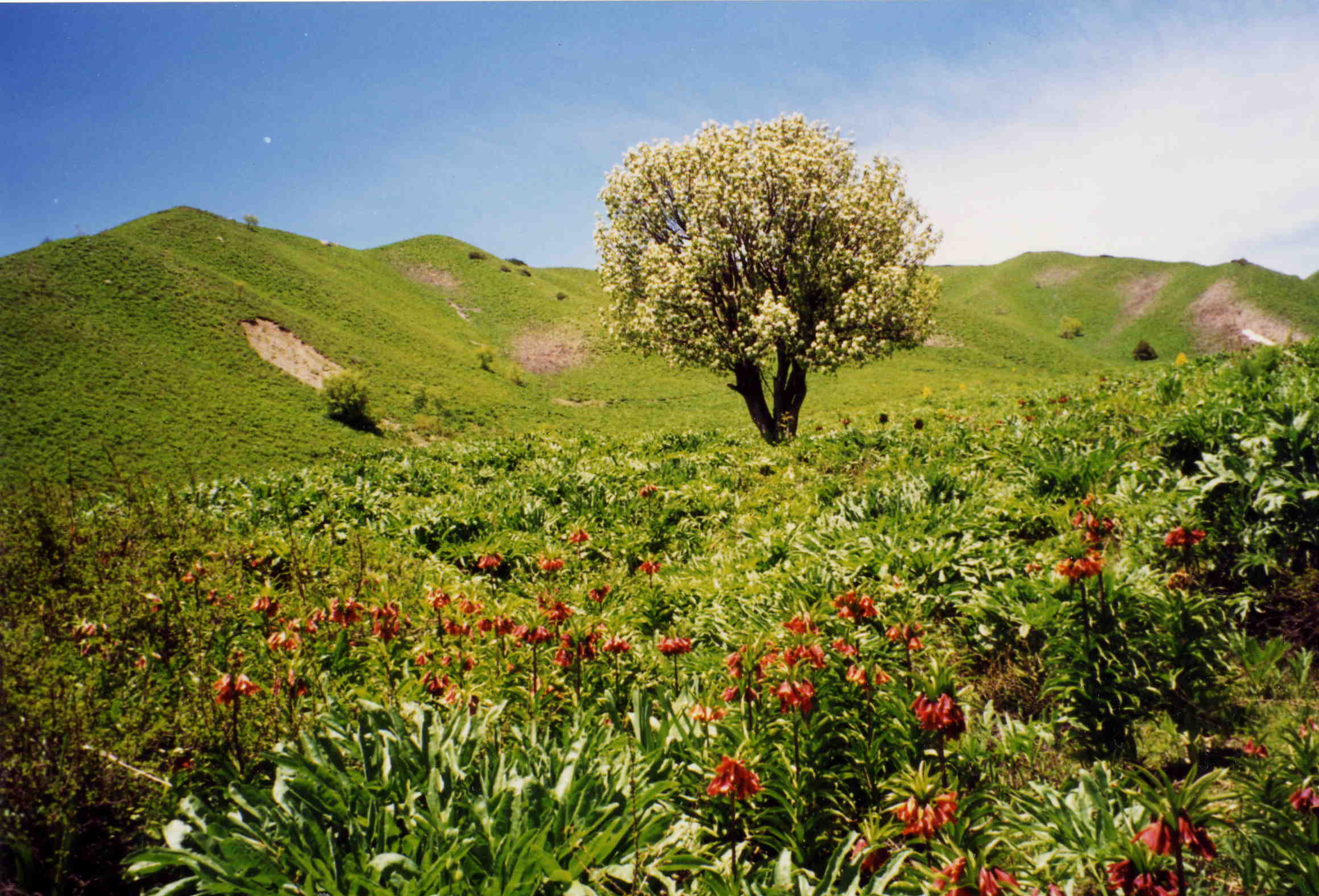|
Chitral Relief Force
The Chitral Expedition (Urdu:چترال فوجی مہم) was a military expedition in 1895 sent by the British authorities to relieve the fort at Chitral, which was under siege after a local coup following the death of the old ruler. An intervening British force of about 400 men was besieged in the fort until it was relieved by two expeditions, a small one from Gilgit and a larger one from Peshawar. Background to the conflict In the last phase of the Great Game, attention turned to the unclaimed mountainous area north of British India along the later Sino-Russian border. Chitral was thought to be a possible route for a Russian invasion of India, but neither side knew much about the local geography. The British sent people like George W. Hayward, Robert Shaw and probably some Pundits north to explore. On 18 July 1870, Hayward was attacked, captured and murdered. The ruler of Chitral may have had some involvement in Hayward's murder. From 1871 there were Russian explorers in t ... [...More Info...] [...Related Items...] OR: [Wikipedia] [Google] [Baidu] |
Chitral
Chitral () is a city situated on the Kunar River, Chitral River in northern area of Khyber Pakhtunkhwa province of Pakistan. It serves as the capital of the Lower Chitral District, and was previously the capital of Chitral District, and before that the capital of Chitral (princely state), Chitral princely state. The region was encompassed into West Pakistan between the years 1969 and 1972. It has a population of 49,780 per the 2017 census. History Nothing definitive is recorded about the town's first settlers. In the 3rd century AD, Kanishka, the ruler of the Kushan Empire, occupied Chitral. In the 4th century AD, the Chinese overran the valley. Raees rule over Chitral began in 1320 and came to an end in the 15th century. From 1571 onwards Chitral was the capital of the princely state of Chitral under the rule of the Katur Dynasty. Ancient era file:Singoor.png, left, Gankoreneotek Grave in Singoor. The existence of the Gandhara grave culture, Gandharan Grave Culture in C ... [...More Info...] [...Related Items...] OR: [Wikipedia] [Google] [Baidu] |
Peshawar
Peshawar is the capital and List of cities in Khyber Pakhtunkhwa by population, largest city of the Administrative units of Pakistan, Pakistani province of Khyber Pakhtunkhwa. It is the sixth most populous city of Pakistan, with a district population of over 4.7 million in the 2023 census. It is situated in the north-west of the country, lying in the Valley of Peshawar. Peshawar is primarily populated by Pashtuns, who comprise the second-largest ethnic group in the country. Situated in the Valley of Peshawar, a broad area situated east of the historic Khyber Pass, Peshawar's recorded history dates back to at least 539 BCE, making it one of the oldest cities in South Asia. The area encompassing modern-day Peshawar is mentioned in the Vedic scriptures; it was one of the principal cities of the Gandhara, ancient Gāndhāra. Peshawar served as the capital of the Kushan Empire during the rule of Kanishka and was home to the Kanishka Stupa, which was among the tallest buildings in ... [...More Info...] [...Related Items...] OR: [Wikipedia] [Google] [Baidu] |
Gilgit Agency
The Gilgit Agency () was an agency within the British Indian Empire. It encompassed Hunza, Nagar and the governorships of Yasin, Koh Ghizer, Ishkoman, Punial and the tribal areas of Gor, Darel, Tangir, the district of Chilas and the Gilgit tehsil of the princely state of Jammu and Kashmir.The primary objective of establishing the Gilgit Agency was to bolster and fortify these regions, particularly in the context of concerns about Russian encroachment in the area. The agency headquarters was based in the town of Gilgit, within the Gilgit tehsil of Jammu and Kashmir. Gilgit Agency was bounded in the west by the Chitral State, in the northwest by Afghanistan's Wakhan corridor, in the east by Chinese Turkestan, in the south by the Kashmir province, and in the southeast by the Ladakh ''wazarat'' of Jammu and Kashmir (which included Baltistan). An Officer on Special Duty was established in 1877 in the town of Gilgit till 1882 to monitor the Baroghil and Ishkoman passes. After ... [...More Info...] [...Related Items...] OR: [Wikipedia] [Google] [Baidu] |
Yasin Valley
Yasin Valley is a high-altitude mountain valley nestled in the Hindu Kush mountain range, located in the northern region of the Gupis-Yasin District within Gilgit-Baltistan. The valley is situated approximately 148 kilometers (92 miles) from the city of Gilgit, which serves as the capital of Gilgit-Baltistan. Within the valley's territory lies Yasin Tehsil, an administrative subdivision of the region. History Despite its sparse population, Yasin Valley has held strategic importance historically. This is due to the fact that it leads to a high mountain pass leading to the Yarkhun Valley and subsequently to the Broghil Pass in Chitral. These passes facilitate connectivity with the Wakhan Corridor in Afghanistan and further to Tajikistan. Early period Yasin Valley served as the administrative center of Worshigum, which was under the suzerainty of the Mehtars rulers who emerged from Chitral. The Mehtars of Yasin were great warriors and fought against the Sikhs and the ... [...More Info...] [...Related Items...] OR: [Wikipedia] [Google] [Baidu] |
Political Resident
In the British Empire a Political Resident or Political Agent was the incumbent of an official diplomatic position involving both consular duties and liaison function. A Consul or Consul-General has largely consular functions, such as looking after British business persons abroad. A Political Resident or Political Agent, on the other hand, not only has consular duties but also has political contacts with the rulers of native states, such as the Nizam, Nawabs, Maharajas, sultans, sheikhs and rajas. With the end of the British Empire this distinction became redundant because the Political Resident or Political Agent was no longer relevant. See also * Resident (title) * Political officer (British Empire) * Persian Gulf Residency * Residencies of British India The Residencies of British India were political offices, each managed by a Resident (title), Resident, who dealt with the relations between the British Government of India and one (or a territorial set) of princely states. ... [...More Info...] [...Related Items...] OR: [Wikipedia] [Google] [Baidu] |
Jammu And Kashmir (princely State)
Jammu and Kashmir, also known as Kashmir and Jammu, was a princely state in a subsidiary alliance with the Company rule in India, British East India Company from 1846 to 1858 and under the ''Suzerainty#British_paramountcy, paramountcy'' (or tutelage) of the The Crown, British Crown, from 1858 until the Partition of India in 1947, when it became a Kashmir#Kashmir_dispute, disputed territory, now administered by three countries: China, India, and Pakistan. Quote: "Kashmir, region of the northwestern Indian subcontinent. It is bounded by the Uygur Autonomous Region of Xinjiang to the northeast and the Tibet Autonomous Region to the east (both parts of China), by the Indian states of Himachal Pradesh and Punjab to the south, by Pakistan to the west, and by Afghanistan to the northwest. The northern and western portions are administered by Pakistan and comprise three areas: Azad Kashmir, Gilgit, and Baltistan, ... The southern and southeastern portions constitute the Indian state of ... [...More Info...] [...Related Items...] OR: [Wikipedia] [Google] [Baidu] |
Gabriel Bonvalot
Pierre Gabriel Édouard Bonvalot (13 July 1853 – 10 December 1933) was a French explorer of Central Asia and Tibet. Bonvalot was born in the commune of Épagne in the Aube department in north-central France. He was the son of Pierre Bonvalot and Louise-Félicie, née Congniasse des Jardins. He attended schooling at Troyes. Expeditions from 1880-1887 In 1880–1882 he visited Russian controlled Central Asia and returned to France via Bukhara, the Caspian Sea, and the Caucasus.BONVALOT, PIERRE GABRIEL ÉDOUARD , Sixth Edition Copyright© 2004, |
Hunza (princely State)
Hunza (, ), also known as Kanjut (; ), was a Burushaski, Burusho princely state in the present-day Gilgit-Baltistan, Gilgit Baltistan region of Pakistan. Although under the suzerainty of the Kashmir (princely state), Jammu and Kashmir (princely state), it was not a part of it and had status of a separate state. Initially, it functioned as a principality and subsequently became a princely state under a subsidiary alliance with the British India starting in 1892 and continuing until August 1947. For a brief period of three months, it remained unaligned after gaining independence, and then from November 1947 until 1974, it retained its status as a princely state within Pakistan. The territory of Hunza now constitutes the northernmost part of Gilgit-Baltistan, Pakistan. The princely state bordered the Gilgit Agency to the south, the former Nagar (princely state), princely state of Nagar to the east, Xinjiang, China, to the northeast and Afghanistan to the northwest. The state's c ... [...More Info...] [...Related Items...] OR: [Wikipedia] [Google] [Baidu] |
Pamir Mountains
The Pamir Mountains are a Mountain range, range of mountains between Central Asia and South Asia. They are located at a junction with other notable mountains, namely the Tian Shan, Karakoram, Kunlun Mountains, Kunlun, Hindu Kush and the Himalayas, Himalaya mountain ranges. They are among the world's highest mountains. Much of the Pamir Mountains lie in the Gorno-Badakhshan region of Tajikistan. Spanning the border parts of four countries, to the south, they border the Hindu Kush mountains along Afghanistan's Wakhan Corridor in Badakhshan Province, Chitral District, Chitral and Gilgit-Baltistan regions of Pakistan. To the north, they join the Tian Shan mountains along the Alay Valley of Kyrgyzstan. To the east, they extend to the range that includes China's Kongur Tagh, in the "Eastern Pamirs", separated by the Yarkand River, Yarkand valley from the Kunlun Mountains. Since the Victorian era, they have been known as the "Roof of the World", presumably a translation from Persian ... [...More Info...] [...Related Items...] OR: [Wikipedia] [Google] [Baidu] |
Pundit (explorer)
The term pundit was used in the second half of the 19th century to denote native Indian surveyors used by the British to secretly explore regions north of British India. The Pundit was the code-name for one of the first native explorers, Nain Singh, who was originally a schoolteacher (or pundit). His accomplishments were so remarkable that the whole group of around twenty native explorers became known as the Pundits. Two of the most famous pundits included the cousins Nain Singh and Kishen Singh (code-named A.K.)Peter Hopkirk, 1982, "Trespassers on the Roof of the World: The Race for Lhasa", Oxford University Press.Derek J. Waller, 2004, "The Pundits: British Exploration of Tibet and Central Asia," University Press of Kentucky.Account of the Pundit's Journey in Great Tibet - Capt. H. Trotter, The Journal of the Royal Geographical Society (1877). Great Trigonometric Survey of India One of the greatest projects of 19th century geography was the Great Trigonometrical Survey o ... [...More Info...] [...Related Items...] OR: [Wikipedia] [Google] [Baidu] |
Robert Barkley Shaw
Robert Barkley Shaw (12 July 1839 – 15 June 1879) was a British explorer and diplomat. He was an early English traveller to Kashgar in Central Asia, and he established a relation with the local leader; he was later a member of a diplomatic expedition to the area. He became a diplomat in northern India and in Mandalay. Early life Shaw was born in Upper Clapton, London, and was educated at schools on the continent, at Marlborough College, and at Trinity College, Cambridge. Unable to recover his health after an attack of rheumatic fever, he gave up the idea of entering the army, and in 1859 he went to Kangra in the Himalayas, where he settled as a tea-planter. Exploring Central Asia He had an adventurous spirit, and was interested in exploring the then almost unknown country north of the Karakoram; after one or two tentative excursions, he started in May 1868 for Eastern Turkestan, travelling as a merchant. In September 1868 Shaw agreed to meet rival Englishman George ... [...More Info...] [...Related Items...] OR: [Wikipedia] [Google] [Baidu] |
George W
George Walker Bush (born July 6, 1946) is an American politician and businessman who was the 43rd president of the United States from 2001 to 2009. A member of the Bush family and the Republican Party (United States), Republican Party, he is the eldest son of the 41st president, George H. W. Bush, and was the 46th governor of Texas from 1995 to 2000. Bush flew warplanes in the Texas Air National Guard in his twenties. After graduating from Harvard Business School in 1975, he worked in the oil industry. He later co-owned the Major League Baseball team Texas Rangers (baseball), Texas Rangers before being elected governor of Texas 1994 Texas gubernatorial election, in 1994. Governorship of George W. Bush, As governor, Bush successfully sponsored legislation for tort reform, increased education funding, set higher standards for schools, and reformed the criminal justice system. He also helped make Texas the Wind power in Texas, leading producer of wind-generated electricity in t ... [...More Info...] [...Related Items...] OR: [Wikipedia] [Google] [Baidu] |










